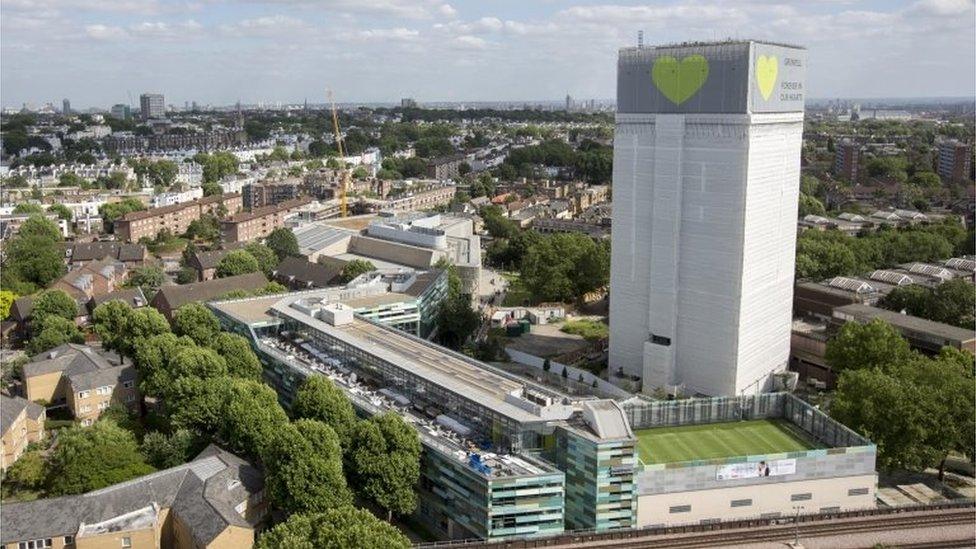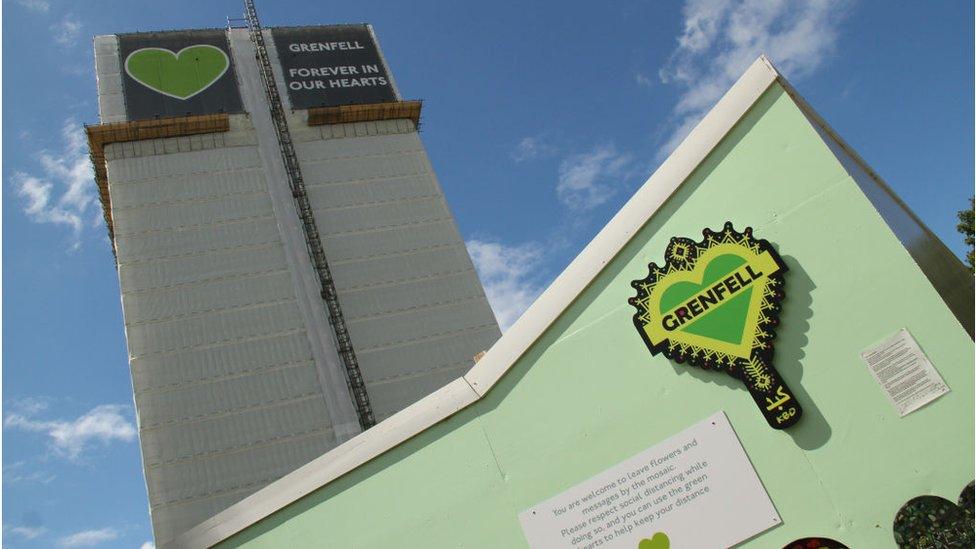Grenfell Tower insulation firm behaved 'dishonestly'
- Published

A former employee from the company which made the combustible insulation used on Grenfell Tower in west London has admitted behaving unethically.
Jonathan Roper of Celotex told a public inquiry that the work he did to get the insulation approved for use on high rise buildings was "dishonest".
He added that he felt "incredibly uncomfortable" with what he was being asked to do at the time.
Celotex says following disciplinary processes, staff have left the company.
The first phase of the Grenfell inquiry concluded that cladding put on during the refurbishment fuelled the fire in June 2017 in which 72 people died.
It is now examining how the tower block blaze could have happened in the first place.
Mr Roper, a former product manager at Celotex, told the inquiry on Monday that the way in which the company presented the results of its fire test was misleading.
He said that Celotex should have considered not selling its products for use on high-rise buildings.
In 2013, while being asked to research how Celotex insulation could be approved for use on buildings over 18m, Mr Roper had written to colleagues asking if they should take the view that the materials "realistically should not be used behind most cladding panels, because in the event of a fire it would burn".
He told the inquiry that the responses he received from colleagues made it clear that Celotex was determined to launch the insulation - known as Rs5000 - onto the market regardless of how it could pass fire tests.
Mr Roper accepted that the discussion within the company was whether Celotex complied with the building regulations or bent the rules to make more money.
'Intended to mislead'
After a first test failure in January 2014, a second system passed in May 2014, but Celotex failed to disclose additional non-combustible elements which it added to prevent this system from failing, the inquiry heard.
On Monday, the inquiry heard Celotex added a 6mm fire-resisting magnesium oxide board to a cladding test rig made up of 12mm fibre cement panels for the second test.
The inquiry heard 8mm fibre cement panels were added over the magnesium oxide to "conceal" its presence, making the whole system almost flush - but for the 2mm difference.
Mr Roper agreed with the inquiry's chief lawyer Richard Millett QC that the decision to use "a thinner layer was to make it less noticeable there was something else behind it", which would aid to "see off any prospect of anyone asking questions" about its make-up.
The inquiry's chief lawyer Richard Millett QC asked: "Did that not strike you at the time as dishonest?"
Mr Roper said: "Yes it did. I went along with a lot of actions at Celotex that, looking back on reflection, were completely unethical and that I probably didn't potentially consider the impact of at the time.
"I was 22 or 23, first job, I thought this was standard practice, albeit it did sit very uncomfortably with me."
Mr Roper said his superiors ordered the removal of any mention in marketing literature of the magnesium oxide. He agreed that was "misleading and intended to mislead".
Mr Millett asked: "Did you realise at the time that if this was how the test was to be described to the market it would be a fraud on the market?"
Mr Roper said: "Yes I did.
"I felt incredibly uncomfortable with it. I felt incredibly uncomfortable with what I was asked to do."
Mr Roper said there was no-one in the firm he could tell about his concerns.
In its opening statement for the second phase of the inquiry, Celotex said: "In the course of investigations carried out by Celotex after the Grenfell Tower fire, certain issues emerged concerning the testing, certification and marketing of Celotex's products... These matters involved unacceptable conduct on the part of a number of employees."
The inquiry has previously heard Celotex saw Grenfell as a "flagship" for its product and cynically exploited the "smoke of confusion" which surrounded building regulations at the time.
Celotex, part of the French multinational Saint-Gobain group, has maintained it promoted Rs5000's use on buildings taller than 18m only on a "rainscreen cladding system with the specific components", used when it passed the fire safety test.
- Published6 November 2020
